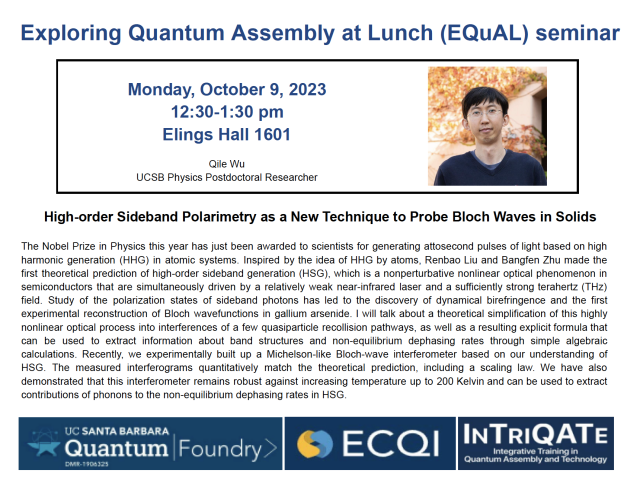EQuAL Seminar: Qile Wu

"High-order Sideband Polarimetry as a New Technique to Probe Bloch Waves in Solids"
The Nobel Prize in Physics this year has just been awarded to scientists for generating attosecond pulses of light based on high harmonic generation (HHG) in atomic systems. Inspired by the idea of HHG by atoms, Renbao Liu and Bangfen Zhu made the first theoretical prediction of high-order sideband generation (HSG), which is a nonperturbative nonlinear optical phenomenon in semiconductors that are simultaneously driven by a relatively weak near-infrared laser and a sufficiently strong terahertz (THz) field. Study of the polarization states of sideband photons has led to the discovery of dynamical birefringence and the first experimental reconstruction of Bloch wavefunctions in gallium arsenide. I will talk about a theoretical simplification of this highly nonlinear optical process into interferences of a few quasiparticle recollision pathways, as well as a resulting explicit formula that can be used to extract information about band structures and non-equilibrium dephasing rates through simple algebraic calculations. Recently, we experimentally built up a Michelson-like Bloch-wave interferometer based on our understanding of HSG. The measured interferograms quantitatively match the theoretical prediction, including a scaling law. We have also demonstrated that this interferometer remains robust against increasing temperature up to 200 Kelvin and can be used to extract contributions of phonons to the non-equilibrium dephasing rates in HSG.